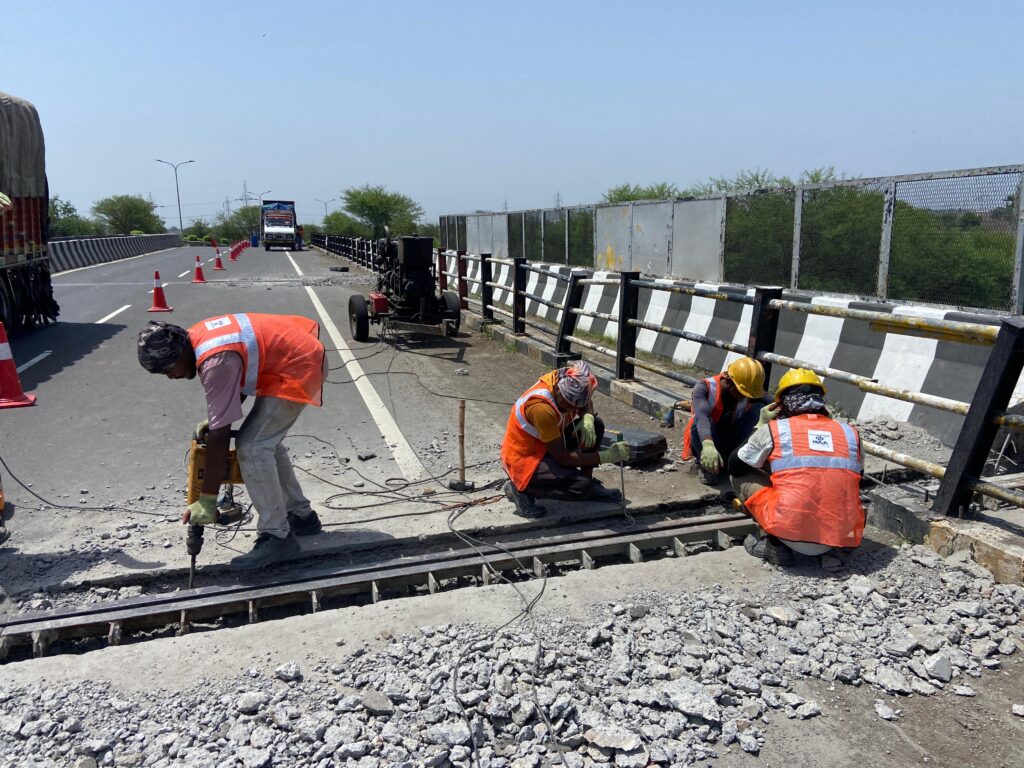
Why Expansion Joints Fail and How Professional Rehabilitation Extends Bridge Life
Expansion joints are the unsung heroes of bridge engineering. Though small in size compared to the overall structure, they play a critical role in accommodating movement caused by traffic loads, temperature fluctuations, seismic activity, and shrinkage. Without them, bridges would crack, distort, or collapse under stress. Yet despite their importance, expansion joints are often overlooked in routine maintenance, leading to premature deterioration and costly failures.
The Role of Expansion Joints in Bridge Performance
Bridges are dynamic structures. They expand and contract with temperature changes, vibrate under traffic loads, and shift slightly due to soil movement or seismic forces. Expansion joints are designed to:
- Allow controlled movement between structural segments.
- Prevent cracking and stress concentration.
- Protect adjacent components from damage.
- Maintain waterproofing and drainage continuity.
Without properly functioning joints, the bridge deck and superstructure are exposed to uncontrolled forces that accelerate wear and compromise safety.
Causes of Failure:
- Improper installation or material selection.
- Accumulated debris restricting joint movement.
- Lack of timely maintenance and sealing.
- Natural wear and tear over years of service.
Warning Signs: Joint leakage, unusual noises under traffic, cracking, or misalignment.
Professional Rehabilitation Solutions:
- Removal of deteriorated joints.
- Installation of elastomeric seals, neoprene glands, or modular joints that meet modern load demands.
- Use of waterproof membranes and protective sealants to prevent ingress.
Expansion joints may be small, but their impact is enormous. When they fail, the entire bridge suffers — structurally, financially, and functionally. Professional rehabilitation not only restores joint performance but also extends bridge life by 15–25 years. With modern materials, predictive technologies, and proactive maintenance, engineers can ensure that bridges remain safe, durable, and resilient for generations to come.
In today’s infrastructure landscape, where aging assets outnumber new builds, preventive maintenance has become a cornerstone of sustainable asset management. It’s not just about fixing what’s broken — it’s about preserving performance, ensuring safety, and maximizing return on investment.
Why Maintenance Matters More Than Ever
Concrete deterioration is often slow and silent. Cracks, corrosion, and delamination may go unnoticed until they compromise structural integrity. The consequences of deferred maintenance include:
- Accelerated reinforcement corrosion, leading to spalling and loss of load-bearing capacity.
- Water ingress, which weakens concrete and promotes microbial growth.
- Increased liability for owners due to non-compliance with safety codes.
- Higher repair costs, often 5–10 times more than early intervention.
In contrast, timely maintenance can:
- Extend service life by 20–50 years.
- Reduce lifecycle costs by up to 40%.
- Improve safety and user confidence.
- Enhance asset value and performance.
Preventive maintenance strategies today go far beyond traditional inspections. With advanced tools, engineers can now detect and repair damage before it becomes critical:
- Non-Destructive Testing (NDT): Identifies voids, cracks, and reinforcement corrosion without breaking concrete.
- Infrared Thermography: Detects hidden moisture, delamination, and insulation failures.
- Structural Health Monitoring (SHM): Uses embedded sensors to provide real-time data.
Once issues are diagnosed, targeted interventions such as polymer-modified repair mortars, micro-silica overlays, and corrosion inhibitors can restore durability. Preventive maintenance is not just about extending life—it’s also about ensuring compliance with evolving safety codes and reducing liability for owners.
Case studies show that with systematic upkeep, RCC structures can last 20–50 years beyond their design life, turning what could have been costly replacements into cost-effective extensions of service life. For property owners and infrastructure managers, maintenance isn’t an expense—it’s an investment in safety, sustainability, and financial efficiency.


